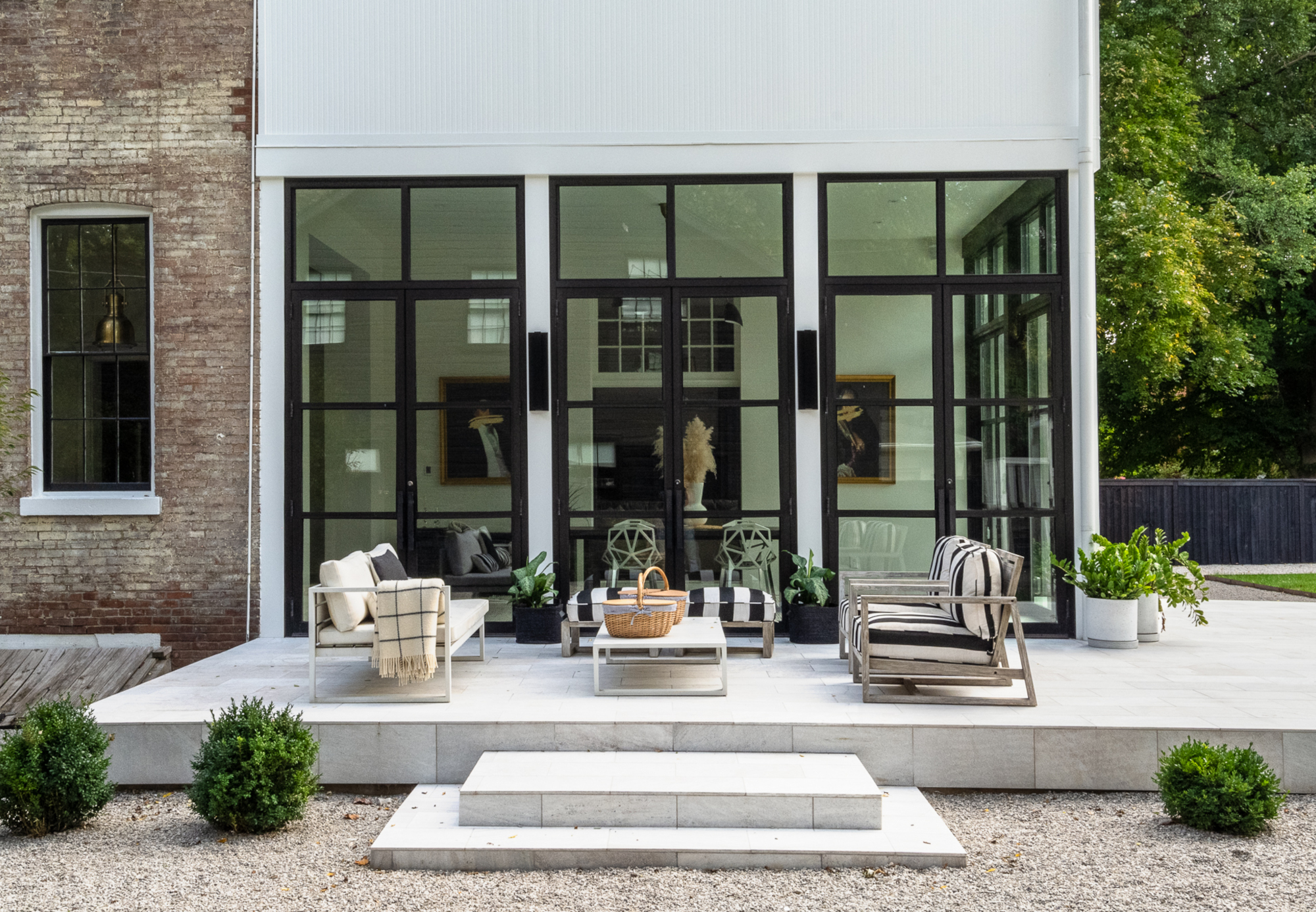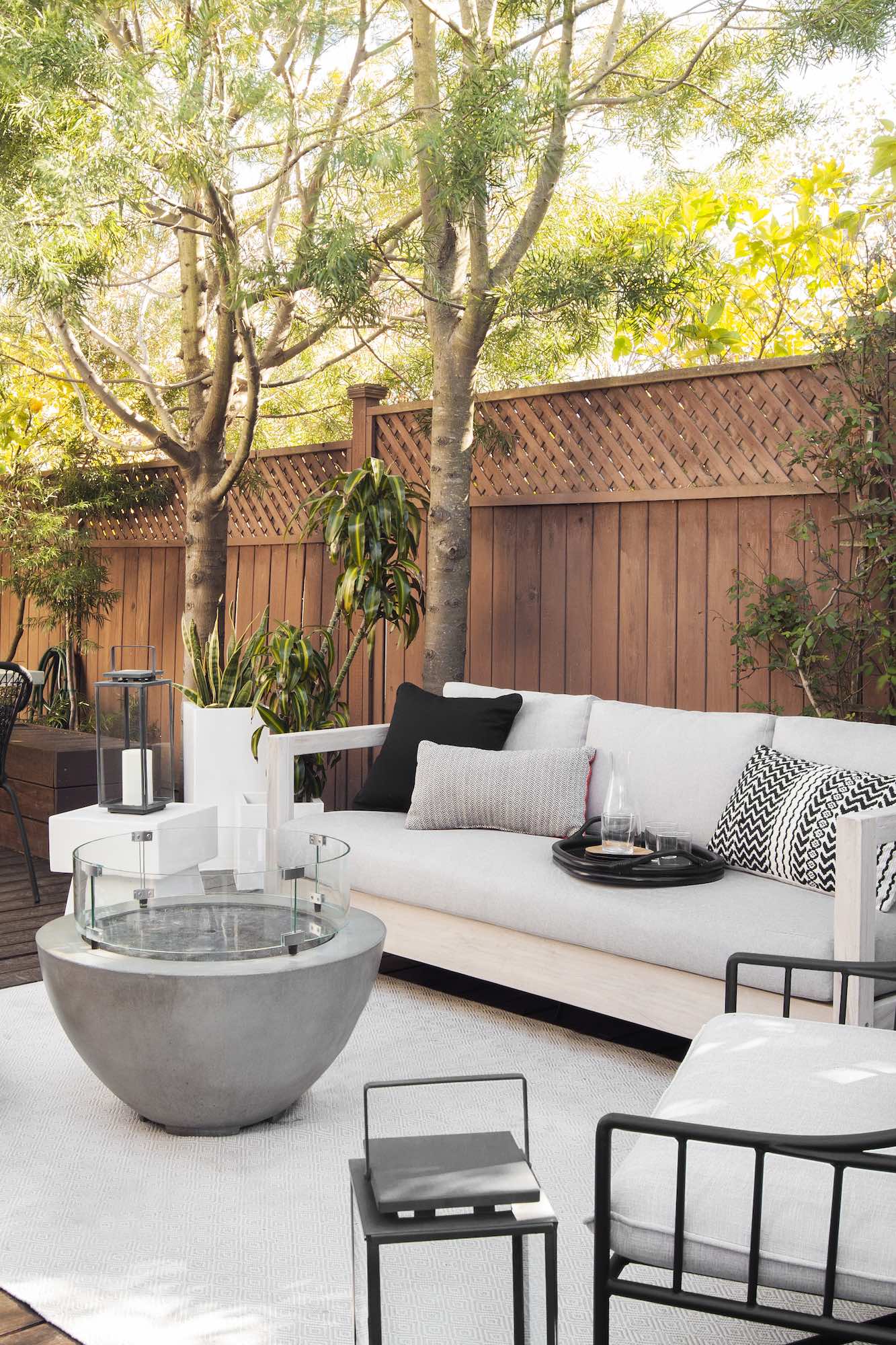
As summer approaches, naturally, we shift to spending much more of our time outdoors. It’s around this time of year that talk of indoor-outdoor living really starts to ramp up – after all, who doesn’t love the idea of gliding smoothly between house and garden, their backyard an extension of their living space?
It’s a backyard idea that designers are all sold on. ‘Indoor outdoor living, for me, represents the pinnacle of a fabulous lifestyle at home,’ says Caroline Kopp, an interior designer based in Westport, Connecticut. ‘Nothing is better than eating and relaxing with friends in a space that is outdoors, but with all the comforts of the indoors.’
So we’ve sold you on the concept – but how can you go about creating an indoor-outdoor space in your backyard? We spoke to designers to get their tips on nailing this transitional way of living.
1. Mirror fixed elements like flooring, joinery and surface finishes

From an aesthetic point of view, continuity is key to indoor-outdoor living – and that extends to hard landscaping elements like patio flooring. Technological developments mean there’s more choice than ever when it comes to weather-resistant surfaces, so it’s easier to create a visual link between the two spaces. For Louisville, Kentucky interior designer Bethany Adams, the outdoor space above was transformed with tiles. ‘Whenever possible, I like to continue interior flooring, like this white quartzite tile, from the inside straight through to exterior spaces like porches and patios for a feeling of expansiveness and true indoor-outdoor living,’ she explains.
Consider other fixed elements like joinery when you’re planning your space, too. Perhaps your patio opens up from your kitchen and you could continue the run of surfaces on the other side of the glazing? Could a bench seat by the window indoors be mirrored outdoors, too? Custom-built joinery for storage or seating is popular amongst luxury designers, says Christiane Lemieux, designer and founder of modern luxury furniture brand Lemieux et Cie: ‘This can be seen in all the outdoor kitchen and living room areas that are trending now.’
Amy Elbaum of Los Angeles studio AE Design has another suggestion for finishes, too. ‘Hardscaping sets the tone for the exterior design – materials like wood decking, pavers and shiplap are great choices to bring into your outdoor space to the next level,’ she says. ‘The warmth of wood decking creates cohesiveness from an interior with wood flooring, and a shiplap ceiling can be a great addition to a pergola to make it feel more connected to the interior.’
2. Choose outdoor furniture wisely

Most garden furniture has a specific look and feel – and it’s not always conducive to a stylish outdoor living room. ‘A lot of [it] is very generic and expected – think wicker sofas and matching ottomans,’ says Amy Elbaum. ‘When selecting outdoor furniture I ask myself if this is a piece I would use for the interior of the home based on its materials and overall aesthetic. The same kind of refined eye should be used when selecting outdoor pieces as indoor pieces.’
It’s also worth moving away from the idea of matching sets, says Bethany Adams. ‘We gave up on "bedroom sets" and "living room sets" decades ago, yet the idea of matchy-matchy exterior furniture persists – why is that?’ she asks. ‘For a truly lived-in look, collect pieces for your exterior the same way you do for the indoors and consider trying different outdoor-appropriate materials like teak, ceramic, sealed stone and terracotta to reflect your eclectic interiors.’
You can also turn to smaller accessories to make modern outdoor furniture feel more luxe. ‘Look for pieces with elegant silhouettes and intricate detailing, [and] don’t be afraid to layer with luxe pillows in materials like outdoor velvet and bouclé,’ says Christiane Lemieux.
3. Bring in non-traditional pieces

Most outdoor living spaces will include some version of a lounge and dining set, but look beyond the basics to create a space that feels like your living room, outdoor style. ‘When designing an outdoor space, you want it to feel as cohesive and complete as possible,’ says Amy Elbaum. ‘That means not just the basics of a sofa and coffee table but also side tables, footstools, pillows, planters, and lighting. Accessorizing your outdoor space will elevate the overall look and give you that “luxe” quality.’
Consider slotting in a garden bar of sorts, too. ‘A bar cart is an excellent addition to your outdoor space,’ adds Caroline Kopp. ‘Remember, you need a place to serve drinks and snacks – and a bar cart or console table also looks amazing nestled amongst greenery and styled with more plants in between your bar items. Just as with indoors, you need tables all around where guests can set their drinks down.’
4. Pay attention to continuity of materials

We’ve already talked hard landscaping, but there are so many options out there for indoor-outdoor fabrics these days that everything from rugs to upholstery can be pulled into your garden – and these textiles are key to creating a space that feels like an extension of your home comfort-wise.
‘Pulling from your indoor color palette is key to selecting materials for your outdoor furniture,’ says Amy Elbaum. ‘Outdoor furniture tends to look best in neutral colors in order to not compete with the organic beauty of mother nature. If your interior is largely light and bright then look to use off white fabrics and teak for your outdoor furniture. If there are a lot of black and darker tones in your interior then consider the use of black aluminum frames for your outdoor pieces.’
Do also look beyond soft furnishings when it comes to choosing material accents too, suggests Christiane Lemieux. ‘Incorporate consistent design elements like metal accents or wood finishes throughout both spaces,’ she says. ‘This will keep the eye consistent and create the illusion of a much bigger space, too.’
5. Invest a little in your lighting

A real indoor-outdoor space can be used well into the evening, just as your living room can – and modern garden lighting is a key part of this. ‘Just as we use decorative lighting on the interior, don’t forget to incorporate it on the exterior as well,’ says Amy Elbaum. ‘A decorative ceiling light is always great if you have a ceiling covering your space. If you have a slatted pergola ceiling, string lights can add so much whimsy. Wall sconces can add a great, soft light to your space as well.’
‘You can definitely use “indoor” lighting outdoors: a lot of lights, on their specs, will state “UL wet” or “UL damp”, and anything with that rating can be used outside,’ says Ashley Ferguson, an interior designer based in Austin, Texas. ‘In addition there are some very fun, classy battery-powered lights that can be used table-side for an outdoor dinner party.’
Finally, think about the strength and color temperature of your lights, just as you would for an indoor scheme. ‘Consider dimmable fixtures and warm-toned LED bulbs to mimic the soft glow of indoor lighting,’ says Christiane Lemieux.







